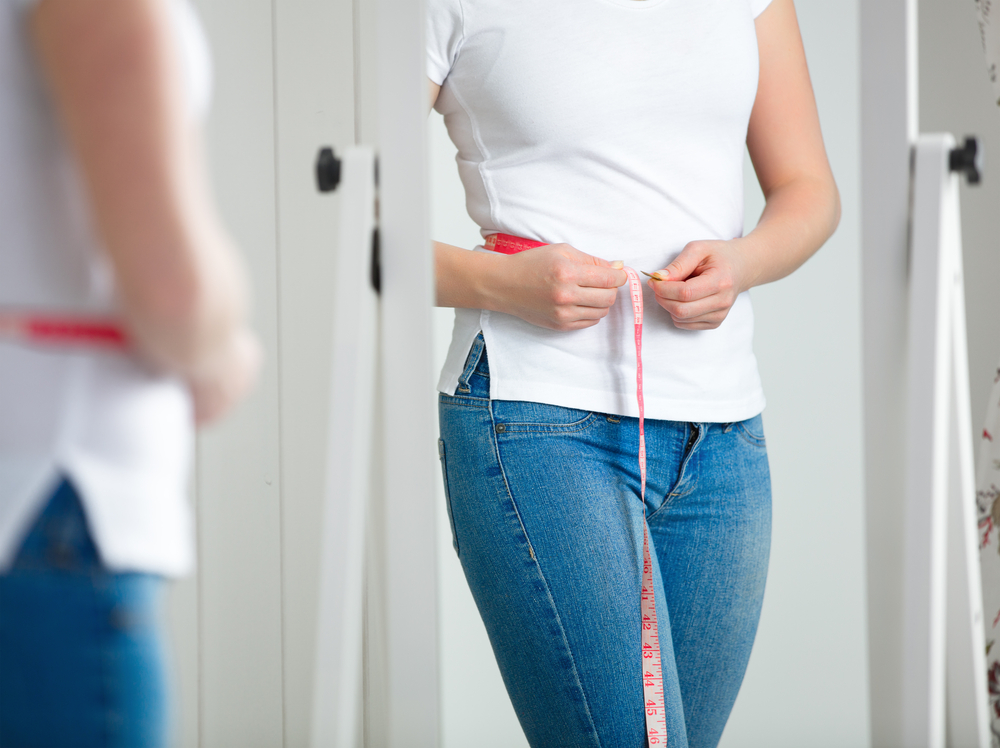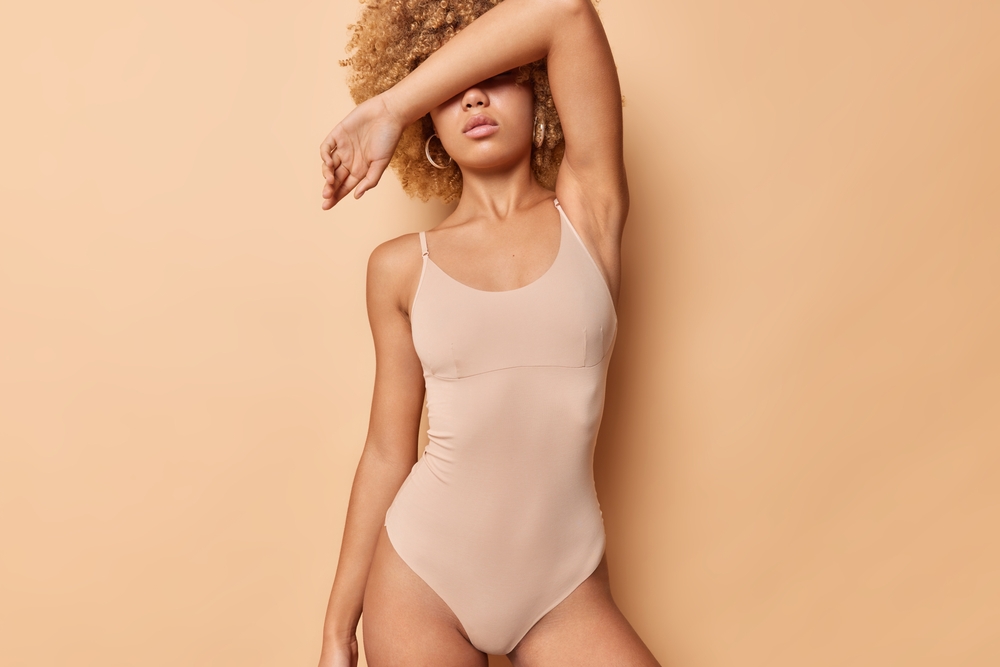When you think of women’s measurements, you will likely think of waist, bust, and hip measurements, as these are often standard when fitting into dresses and any specialized garments.
Today, the average size of a grown woman’s hips, on average, is around 40.2 inches, or 102.2 centimeters.
Hip, bust, and waist sizes have significantly shifted and changed over time due to diet, culture, fitness, and even genetic predispositions.
In the past, hip and waist sizes were often much smaller, especially during times of war and famine.
Table of Contents
What is the average hip size of a woman between the ages of 20 and 29?
Women who are between the ages of 20 and 29 have the smallest hips, measuring at around 98.2 centimeters or 38.7 inches in total.
What size are the hips of a woman between the ages of 30 and 39?
Women between the ages of 30 and 39 are known to have an average hip size of 40.4 inches or 102.7 centimeters.
What size are the hips of a woman between the ages of 40 and 49?

As women begin to age, hips and butt sizes also expand. Between the ages of 40 and 49, women measured in with a hip measurement of 40.9 inches or 104 centimeters in total.
What is the average size of a woman’s hips between the ages of 50 and 59?
For women between 50 and 59, the average size of a woman’s hips was measured as 41.5 inches, or 105.4 centimeters using the metric system.
Between 60–69, what is the average size of a woman’s hips?
Once a woman hits 60 and between the ages of 60-69, she may see a decrease in the size of her hips, waist, and bust.
On average, women between 60 and 69 had hips that measured approximately 103.1 centimeters, or 40.5 inches in total.
What is the average size of hips for a woman between 70–79 years of age?

The older we get, the smaller our hips, busts, and waists become.
Women between the ages of 70 and 79 measured in with hips that were around 101.4 centimeters, or 39.9 inches, giving them the closest hip size to women between 20 and 29.
How big are the hips of women who are older than 80 years?
Women who are older than 80 years old will see an even bigger decrease in the overall width and girth of their hips.
Women who were over the age of 80 had an average hip circumference measurement of 39.1 inches or around 99.4 centimeters.
What determines a woman’s hip size?
Most often, the size of a woman’s hips is determined by her genetics as well as the width and girth of her hip bone.
However, the expansion of a woman’s hips can occur due to giving birth or even due to a lack of exercise and poor diet.
Weight gain can cause the expansion of the waistline and hips in general, but it will not change the standard size of a woman’s hip bones.
It is possible for a thin woman to have wide hips if her hip bones and genetics call for wider hips.
What is a waist-to-hip ratio?

A waist-to-hip ratio, also referred to as the WHtR by some, is a method of determining your body shape as well as potential health risks you may have based on your weight and overall shape.
You can use your WHtR to also determine whether or not you may need to get into shape more in order to reduce and/or eliminate potential health risks from occurring later on in life.
How do I calculate my WHtR?
If you want to calculate your waist-to-hip ratio, you can do so by first measuring the circumference of your waist.
You can measure the circumference of your body’s waist using the same techniques used to measure your hips at their widest point(s).
Once you measure your waist, you can then use your waist circumference and divide the inches of your waist circumference by your hip circumferences in inches.
How do I calculate my waist-to-height ratio?

Another way to determine how healthy your body shape is can include calculating your waist-to-height ratio.
You can divide your current waist circumference by the total height you are in inches in order to properly and accurately calculate your waist-to-height ratio.
For women, a healthy waist-to-height ratio will typically fall between 0.42 and 0.48.
For those who have a higher waist-to-height ratio or even a smaller ratio, there may be underlying health risks at play that require further follow-ups by doctors and medical professionals.
Why is it important to understand hip and waist ratios?
Knowing your hip and waist ratios can provide valuable insight into the overall health of your body based on its current shape, height, and your current weight.
You can also learn whether or not you are at additional risk of potential heart problems, illnesses, or even ailments that can be prevented by maintaining a properly balanced diet and by monitoring your waist circumference and your own personal ratios.
How are the hips of a woman measured?

Measuring a woman’s hips is done by locating the hip bone and wrapping a standard flexible measuring tape around the center of the hip bone on one side to the other hip bone in the body.
Whenever you are measuring the width of a woman’s hips, it is important to do so when her feet are together.
Do not measure hips when an individual’s feet are apart from one another.
Can you reduce your hip size?
At times, it may be possible to reduce your overall hip size by losing weight and reducing the size of your waist as well.
However, it is important to remember that it is not possible to reduce the actual and natural size of your hip bones, in either men or women.
However, your hips when you are a healthy and average weight are most likely the smallest they can get, even if you attempt to lose more weight or sculpt your body even more.
What are common hip shapes?

Contrary to popular belief, there are actually numerous types of hip shapes and sizes.
Every woman’s body is unique and individual, and hip bones and their shapes are no exception. Some of the most notable hip shapes in women today include:
- A-line hip shape: The A-line hip shape provides a smooth and gradual transition from the upper body to the lower body and feet, without many bulges, dents, or shifting shapes. A-line shapes are typically smooth and flattering.
- Heart-shaped hips: Heart-shaped hips can cause hips to appear as if they are flaring or much larger than the waist or stomach, appearing as if they are protruding from the sides and back of the body. Heart-shaped hips work well with slim-fit pants, straight-legged jeans, as well as skirts and dresses designed to flatter those with a V shape.
- Triangle hips: Triangle hips are unique, and often cause the upper thighs and waist to expand simultaneously while then meeting at a smaller point towards the feet. When looking at an individual who has triangle-shaped hips, you may be able to see a triangular or diagonal shape of them, depending on how they are standing and at what angle.
- Square-shaped hips: While it may sound odd, square-shaped hips are actually extremely common and may be one of the most common shapes for hips in many women. Square-shaped hips typically work well with high-waisted pants and flare jeans, due to the bump in the waist and thicker thighs. Most clothing options work well for those with square-shaped hips.
- Round hips: Curvy and round hips work well with jeans and pants that flatter them, such as dark-colored jeans and tight-fitted jeans that are also dark in color. Low waits for round hips can be problematic, which is why it is often best to seek out pants with a higher waist if you have rounder hips and buttocks in general.
- Narrow hips: If you have narrow hips, you may not feel as if you have much of a shape. However, narrow hips are perfect for lower-waisted pants as well as fitted pants that help to accentuate any shape, even those that are boxy and narrower naturally.
What does having bigger hips mean?
While some women may feel self-conscious when it comes to having larger or wider hips, having bigger hips can often be an indicator that a woman is fertile or that she is capable of producing offspring, which can be attractive and appealing to a potential mate and partner.
Additionally, having big hips can also indicate a genetic factor, especially if a woman comes from a long line of individuals who are taller and wider in size and appearance.
Tips for measuring a woman’s hips

Whether you are interested in measuring your own hips for a new garment or outfit you are interested in wearing or if you are looking for health and medical purposes, there are a few tips to remember whenever you are measuring a woman’s hips, such as:
- Remove clothing: Remove all clothing (with the exception of underwear) for the most accurate measurement possible before you begin.
- Feet together: Place your feet together, ensuring your thighs are touching one another.
- Find the center of your hip bone: Locate the center of your hip bone or the widest area of your hips and waist. Place the beginning of your measuring tape on the widest part of your hips.
- Hold in place: Hold the first part of your measuring tape in place as you begin to wrap the remainder of your measuring tape around the body and to the opposite hip.
- Connect: Once you have the first section of your measuring tape in place and you are comfortable with moving the tape around, you can stretch the measuring tape around and connect it to where you began. After you have connected the measuring tape around the widest areas of your hips, you will have an accurate reading of how many inches or centimeters your hips are at any time.
Whenever you are using a traditional cloth, fabric, or flexible measuring tape, always ensure that it remains flat.
Check the measuring tape you are using for any bends and twists, as this will result in an inaccurate measurement and reading.
Learning about a woman’s hip size can help you to discover the different types of bodies and shapes in women based on age groups, genetics, and even cultural factors.
When you know what the average size is for hips in a woman at any age, you can determine whether or not you are average in terms of size or if you have wider or smaller hips than the average woman from around the world.




